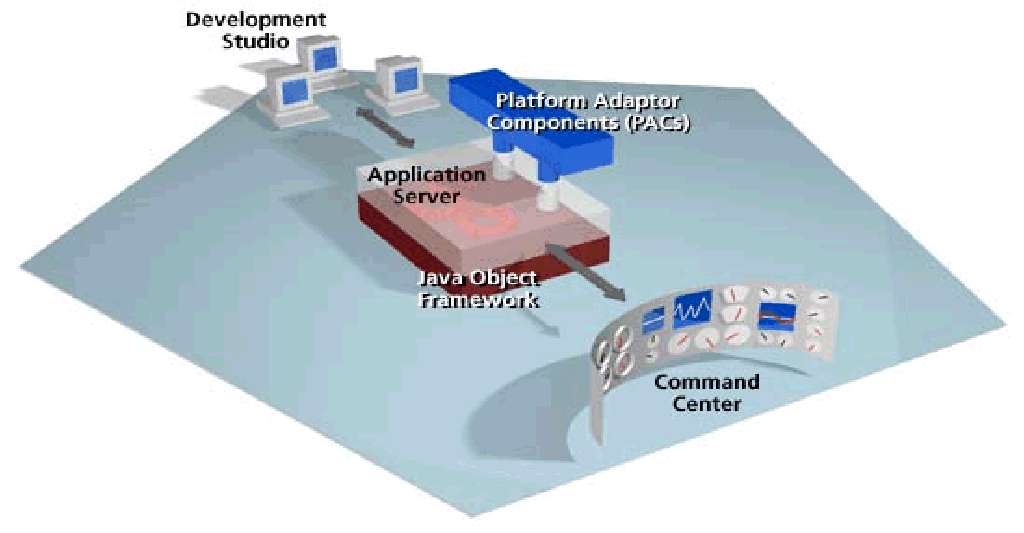What is NetDynamics?
NetDynamics (ND) is an Application Server for Web based
environments. As part of the marketing and promotions plan, ND also developed
and gives away its Developer Studio product. The idea is that if you develop
applications and the development is easy, and robust, you will want to
use and sell the Application server.
From the ND web page, "NetDynamics, Inc. enables
Global 2000 companies to assemble and deploy NetBusiness applications in
order to pursue new
business opportunities and respond rapidly to dynamic market conditions.
The NetDynamics 4 platform is a development, deployment and
integration solution that serves as the foundation for the next generation
of network computing. The following essential elements make up
the NetDynamics 4 platform."
NetDynamics was recently acquired
by Sun Microsystems, Inc. and is located in Menlo Park, CA.

NetDynamics Framework
Development Studio
This is the IDE used to
create NetDynamics projects which are essentially Web applications. Project
are developed using a Java Object framework, which is the fine grained
control of visual components, state and session, transaction management
and data controls. The framework consists of about 400 Java classes, over
4,000 Java methods and provides full support for the JDK 1.1 event model
(this event model was significantly changed from the JDK 1.0 event model).
ND also supports what it calls PACs (Platform Adapter Components). These
components allow 3rd party entities to build Add-on, Plug-in server components
to directly interact with SAP, PeopleSoft, Tuxedo, CICS and others. There
is also an Integration Assistant which is a visual CORBA Component builder.
The Developer Studio also provides for Object Property Inspector, support
for Multi-threaded environments, source control, integrated debugging and
extensive Wizard development tools.
Application Server
The application server is
CORBA (common object request broker architecture) based and multi-threaded.
It can run on NT or a variety of flavors of UNIX boxes. It is designed
for enterprise integration, multi-tier load balancing (in other words it
will run on multiple machines, multiple processes, in a multi-threaded
OS, all at the same time and fairly transparently to the end-user). It
provides for multi-level monitoring and restarts (so I don't have to reboot
the whole machine to recover from problems) and it is highly flexible and
extensible through open industry standards. The main management tool,
the Command Console provides for a one stop shop to monitor and manage
the server, even over the web itself!
In terms of the CORBA part, CORBA is of course a
standard for communication between distributed objects. The ND Application
server uses the Inprise ORB to handle requests from one object to
another.
Command Center (also known as the Console)
The Command Center
or Console is the Application Server management utility. The Console has
it's own separate security and is used to check upon the state of the server.
The Console can be reached from the Application server machine or remotely
from the Web (it is a Java based utility).
Contents
What is RAD? Server
Architecture
